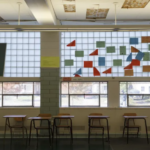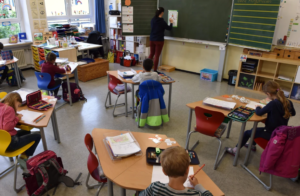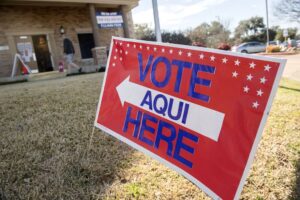Like many states across the country, Illinois lost public school students last year, and the declines were largely driven by sizable drops in pre-kindergarten and kindergarten students, according to enrollment data released by the state board of education on Friday.
In districts across the state, enrollment for Illinois’ youngest students fell last spring compared to 2020 as parents worried about safety and struggled with the difficulties of remote learning. Pre-K rolls dropped by 17%, and Illinois reported an 8% decline in kindergarten students from 2020 to spring 2021.
The state board of education reported that nearly 70,000 students, or 3.6%, left schools statewide during the same time frame — compared to a national decline of 3%. That compares to a smaller loss, of 1.4% of students, from spring 2019 to 2020, when the pandemic forced the closure of schools statewide. (The state also released test score data this week; read more here.)
Since 2011, Illinois has lost 9% of its public school enrollment.
State Superintendent Carmen Ayala said this week that the state is working on a campaign with Gov. J.B. Pritzker’s office of Early Childhood Development to re-engage families and enroll young students.
“The campaign will address barriers to enrollment and ensure that families know how important preschool and kindergarten are and that it is safe for children to attend,” said Ayala.
However, Illinois does not require parents to enroll their children into pre-K or kindergarten. Prior to the pandemic, about a third of Illinois’ eligible 4-year-olds were enrolled in a state preschool program, but access was uneven and pre-K options were not available at all schools.
From 2020 to 2021, the state’s four largest racial and ethnic groups — Asian American, Black, Latino, and white — changed slightly. White student enrollment decreased by 1.86%, while Black student enrollment held steady. There were increases in Asian American student enrollment, by 3.85%, and in Latino student enrollment by 1.5%.
Throughout the state there was an increase in English language learners. The number of students with disabilities remained constant.
The data released this week reflected spring 2021 enrollment, when some districts were struggling to reopen or were partially reopened with hybrid schedules that required some remote learning. How that pandemic school year will affect school rolls will have an impact for years to come, officials have said.
Officials attributed 2.5% of Illinois’ enrollment decline to the pandemic as school districts struggled to reopen school buildings last year. Prior to the pandemic, Illinois estimated losses of about 1.1% per year due to declining birth rates.
Compared to pre-pandemic enrollment in the spring of 2019, the state’s top five largest school districts reported an average enrollment drop of about 6.74% with Rockford School District 205 losing a little over 9% across the stretch of the pandemic and Chicago losing nearly 7% across the same time frame.
In numbers released earlier this week that show 20th day enrollment for fall, Chicago, the state’s largest school district, reported enrollment declines of another 3%, or roughly 10,000 students. Joliet Public Schools saw enrollment fall by 4%, as about 400 students left the district, with declines across several grades. The exception among large districts was Peoria Public Schools, which reported a 4.3% increase in enrollment.
Enrollment is a key factor in how much evidence-based funding districts receive from the state. Illinois officials said this week that school districts will not be penalized for losing students and will retain current funding. However, they will not be eligible for any additional per-student dollars.
Illinois has received nearly $8 billion in federal emergency coronavirus funding across three stimulus packages. Public education advocates have worried that without increased state funding contributions, school districts may struggle to afford hires they made using federal stimulus money. Some districts have been reluctant to hire additional personnel for fear of reaching a funding cliff when the stimulus money runs out.
This article was originally posted on Illinois enrollment declines driven by loss of pre-kindergarten, kindergarten students











More Stories
More West Virginia schools will participate in opioid abuse prevention program
Pennsylvania is increasingly underfunding special education, report finds
Memphis’ Kingsbury High School community steps up call for changes